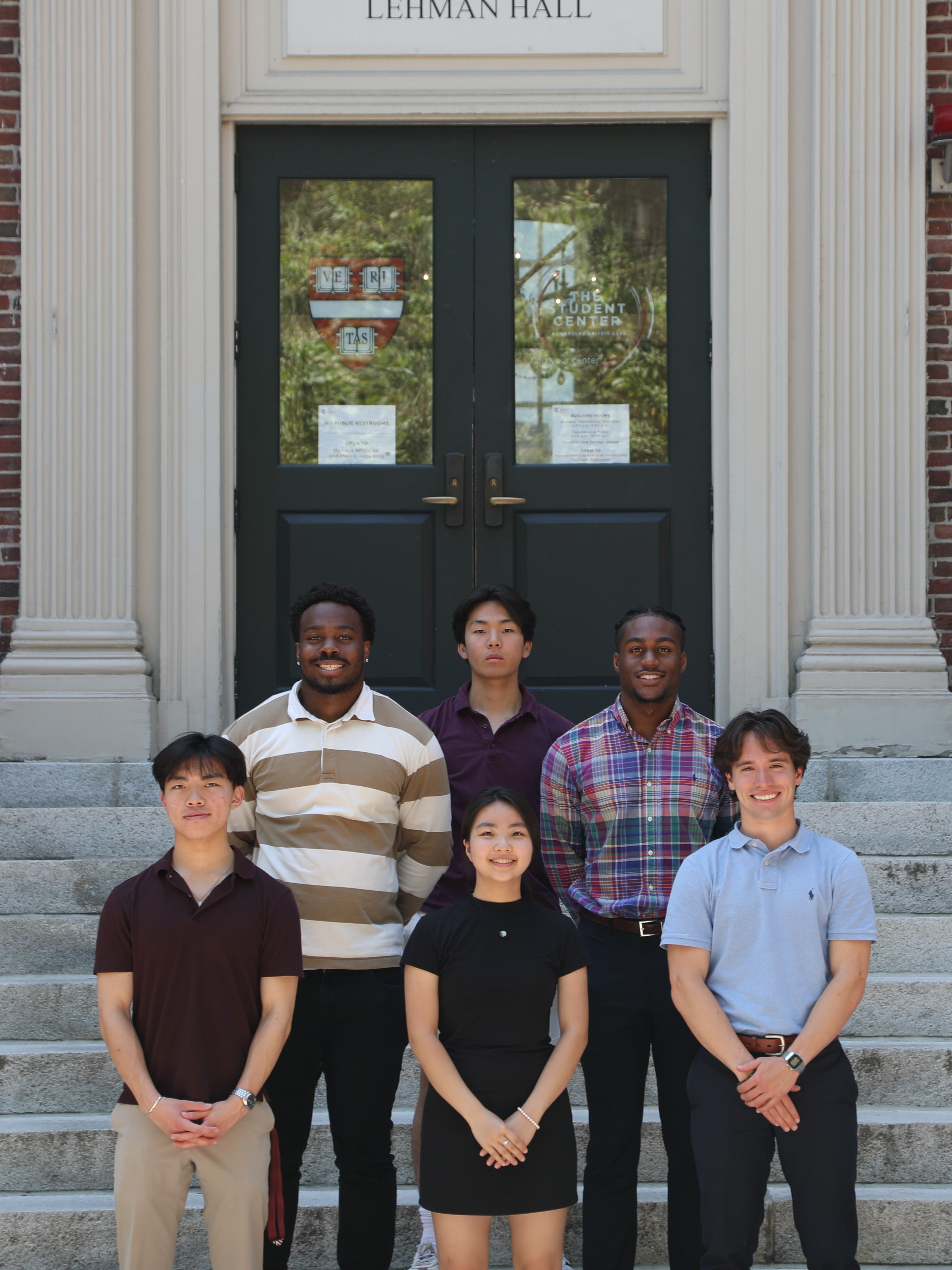Newest Student Article
Inspiring Indian Women Authors: Creating a Supportive Environment
Rhea Chadha
Published: 09 November 2022 | Download
Student's Published Works
Abstract
This exploratory research aims to get a high-level understanding of the factors that encourage or discourage the writing efforts of Indian women authors. A list of such factors was first obtained through qualitative secondary research, and both quantitative and qualitative feedback was obtained on these factors by designing a questionnaire that was administered to an illustrative set of Indian women authors. The study was designed to determine the average percentage scores for encouraging and discouraging factors for each respondent, and also whether a majority or minority of respondents experienced each particular factor. The results indicate that a majority of the survey respondents faced an overall unsupportive environment in their creative writing efforts.
Keywords: Learning India, women authors, encouraging/discouraging factors, supportive/unsupportive environment
Introduction
India has a rich literary tradition. The Mahabharata, The Ramayana, The Gita, numerous Vedas and Upanishads are amongst the most famous texts, but there are countless more. Writing is seeing a boom even in current times. According to an article in the Financial Express by Dar (2022, pp. 5), the report titled ‘Value proposition of Indian publishing’, pegged the Indian publishing industry at ₹500 billion in 2019 and projected it would reach ₹800 billion by 2024. On those lines, it is worth mentioning that according to an article in The Hindu by Salam (2022), Geetanjali Shree has recently become the first Indian author to win the prestigious International Booker Prize for the translation of her Hindi novel, Ret Samadhi.
However, the representation of women authors in Indian publishing remains low. In an article in the Times of India (TNN, 2019), it is mentioned that the HT-Nielsen bestsellers list for India comprises mostly male authors whereas the NY Times’ list comprises mostly women authors. This difference could be due to several factors such as lack of interest, lack of creativity, or perhaps structural biases in the system which discourage Indian women authors. Erica Jong had said, “There is still the feeling that women's writing is a lesser class of writing…that what women know about is a less category of knowledge”. As the author of this study, when I co-authored the book ‘Life as a Teacher’ on learning from all experiences, I did not experience such biases but did encounter a couple of challenges which motivated me to dig deeper into this topic.
The purpose of this research study is to determine factors which either discourage or encourage women authors, and to survey a few women authors to analyse the kind of environment - whether supportive or unsupportive - that they experience.
The hypothesis is that the environment being experienced by these authors is ‘Unsupportive’. If yes, then that would most likely explain the low representation of women in Indian writing.
Methodology
The study consisted of three steps:
Step 1: Determining factors that encourage or discourage women writers (Secondary Research)
Discussions with a few women authors and a review of articles appearing in papers, journals etc. was conducted to create a high-level list of factors that influence the writing propensities of women authors. These were then classified into two groups: factors that encourage and factors that discourage writing by Indian women authors. The classification resulted in a list of five factors that encourage Indian women writers and seven factors that discourage them.
Group I: List of factors that encourage Indian women authors
The list - and explanations - of factors that provide encouragement includes:
- Strong background/family support: Encouragement is provided by the family and domestic engagements are shared.
- Availability of mentors/sponsors: People who guide throughout the publishing process and support the author.
- Opportunities/programs to encourage development of talent: These comprise workshops at literature festivals, opportunities at schools or colleges and/or government-offered programs to express writing.
- Awards/recognition for creative writing efforts: Recognition for being a first-time author or awards by educational bodies.
- Technological Advances that are simplifying the publishing process and removing intermediaries: E-publishing options with wider reach and revenue potential.
These factors, taken together, create a ‘Supportive’ environment.
Group II: List of factors that discourage Indian women authors
The list of factors that result in discouragement includes:
- Gender bias against women writers: This could be in the form of women not being encouraged to write or being discouraged from pursuing writing.
- Lack of role models: Having very few Indian women authors to look up to.
- Overall low female representation in various fields: For example, while the proportion of female managers in Asia has increased from 20% to 25%, little progress has been made beyond this since 2016 (Financial Express, 2022). This, by itself, could explain the lower proportion of women writers in the overall population of writers.
- Unfavourable publishing ecosystems: Budding women writers may lack knowledge of publishing ecosystems or could experience lack of support. This could perhaps be due to focus on limited genres.
- Low importance of literature as a profession: The focus may be more on academics, and reading/writing may be considered a pastime rather than a full-time vocation.
- The perception that writing is substandard or unremunerative: Allegedly, Margaret Atwood worried that her failure to have a nervous collapse was a sign of a substandard writer (Anantharaman, 2022). Since writing need not always provide a stable and secure income, it may discourage writing efforts.
- Language barriers to writing: Writing in regional languages in a country as diverse as India is unappreciated and regional authors don’t tend to reach the mainstream or masses. Very few have the conviction of Geetanjali Shree to say that their creative writing is exclusively in Hindi (Jha, 2022).
These factors, taken together, create an ‘Unsupportive’ environment.
Step 2: Scoring each factor (Primary Research)
The output of Step 1 was used to develop a survey questionnaire to which detailed responses were sought either over a call or via email from 30 Indian women authors. Responses were received from 15 women authors. For each respondent, the factors were scored in the following manner:
- The factor was scored as ‘1’ if it resonated with the respondent’s personal experience.
- It was scored as ‘0.5’ if it partially resonated with the respondent’s experience.
- It was scored ‘0’ if the factor did not resonate with the respondent’s experience.
Step 3: Analysis Design to determine whether women authors experience a ‘Supportive’ or ‘Unsupportive’ environment
Step 3.1 Analysis for each respondent across factors
The responses from each respondent were then consolidated in a worksheet. For each respondent, Average (percentage) Scores were calculated:
- The list of 5 encouraging factors (Group I) [Average Percentage Supportive Score], and
- The list of 7 discouraging factors (Group II) [Average Percentage Unsupportive Score].
Step 3.2 Definition and Implication of ‘Net Score’
The ‘Net Score’ was then calculated as the difference between the Average Percentage Supportive Score (APSS) and the Average Percentage Unsupportive Score (APUS).
Net Score = APSS - APUS
The implications of the Net Score are as follows:
- A positive Net Score will imply that the respondent, on average, experienced a ‘Supportive’ environment.
- A zero Net Score will imply that the respondent experienced a Net Neutral environment.
- A negative Net Score will imply that the respondent experienced an ‘Unsupportive’ environment.
Moreover, if the Net Score (positive or negative) has a magnitude of 25% or higher, then the degree of impact of the Net Score would be considered ‘High’, else it would be considered ‘Low’.
Step 3.3 Analysis for each factor across the entire group of respondents
The percentage of respondents who experienced each factor was determined (‘Total Respondent Percentage’ or TRP). if:
- TRP > 66%, the factor was experienced by a ‘Majority’ of the respondents
- TRP between 33% and 66%, the factor was experienced by a ‘Moderate’ number of the respondents
- TRP < 33%, the factor was experienced by a ‘Minority’ of the respondents
The results were then analysed.
Results
The results are as described below:
Analysis of Net Score
A majority of the respondents (73%) had a ‘Net Score’ that was negative, implying that a majority of Indian women authors experienced an overall ‘Unsupportive’ environment in their writing efforts. The analysis also indicates that 33% of the respondents experienced a ‘High’ level of discouragement, and an additional 40% experienced a ‘Low’ level of discouragement. The remaining 27% of respondents experienced ‘High’ and ‘Low’ levels of encouragement in equal measure i.e., 13.5% experienced ‘High’ levels of encouragement and 13.5% experienced ‘Low’ levels of encouragement.
Group of Factors that Encourage
The analysis indicates that within the group of factors that encouraged Indian women authors, the two factors that were experienced by a ‘Majority’ of the respondents are:
- ‘Strong background/family support’. One of the respondents mentioned, “Family was always there”, and a similar sentiment was shared by 80% of the respondents.
- ‘Technological Advances’
The factors experienced by a ‘Moderate’ number of respondents include ‘Availability of mentors/sponsors’, ‘Awards/recognition for creative writing efforts’ and ‘Opportunities/programs to encourage development of talent’. A respondent commented that they had “no clear idea of who to approach, where to go, what to do and when”.
Group of Factors that Discourage
The results indicate that within the group of factors that discouraged Indian women authors, the following factors were experienced by a ‘Majority’ of the respondents:
- ‘Overall low female representation in various fields’. A key sentiment from the respondents was “organisations should go by merit, and not by other considerations”.
- ‘Writing perceived as unremunerative’
- ‘Language barriers to writing’
- ‘Low importance of literature as a profession’. One respondent exclaimed “Books are seen as pastimes and efforts to write are frowned upon”.
- ‘Lack of role models’
The factor ‘Unfavourable publishing ecosystems’ was experienced by a ‘Moderate’ number of respondents.
However, only a ‘Minority’ of the respondents considered the factor ‘Gender bias against women writers’ was relevant in their context.
Discussion
This is an exploratory study and hence the survey was conducted with a focused set of participants. The initial results do seem to indicate that Indian women authors experience an ‘Unsupportive’ environment. The study should be expanded to a wider base of participants to validate the findings.
Also, the sample of authors consisted of upper middle-class women living in a metropolis. It is not completely representative of the universe of Indian women authors, but is illustrative. Future studies can choose a more diverse set of participants.
The list of factors that encourage and discourage Indian women authors was based on a review of articles in general purpose magazines and newspapers because the literature review did not lead to any scholarly articles which had such a list of relevant factors. When asked, the responding women authors validated these factors and mentioned they couldn’t think of any additional ones to add to the list. Moreover, the strength of the factors within each group was considered to be equal and then a simple average score for each group was determined. A research study can be undertaken to determine the comprehensiveness of these factors and their relative strengths.
Conclusion
The study is illustrative of the challenges that Indian women authors experience. All the women authors who responded to the survey mentioned that this topic resonates with them. They mentioned that they would like to see the final research report and would be interested in supporting efforts to promote Indian women authors.
The study emphasizes the need to create an enabling ecosystem for women authors to actualize their writing potential. Steps like instituting rewards are very simple to implement, yet can have a tremendous impact in terms of encouraging emerging talent. This talent should be encouraged from a young age and school programs should be instituted to enable more girl students in their creative writing journeys. To paraphrase Ayn Rand, the question for Indian women authors shouldn’t be who is going to let them write, it should be who is going to stop them.
Also, as the overall representation of women in various fields goes up, their contribution to writing efforts in those fields should commensurately increase. Hence, the overall efforts for women empowerment need to be strengthened.
References
Anantharaman, Latha (2022) Making Everything Illuminated. India Today, May 10-16
Dar, Vaishali (2022) Words & Figures. The Financial Express, May 29
FE Bureau (2022) Higher female representation in management results in positive impact. The Financial Express, March 7
Jha, Aditya Mani (2022) The Past Comes First. India Today, June 7-13
Khan, Faizal (2022) ‘It’s important kids find some mirror in literature’. The Financial Express
Salam, Ziya Us (2022) Geetanjali Shree’s ‘Tomb of Sand’ first Hindi novel to win International Booker Prize. The Hindu, May 27, https://www.thehindu.com/books/books-authors/geetanjali-shree-wins-international-booker-prize-for-first-hindi-novel-tomb-of-sand/article65465146.ece
Times News Network (2019) Women writers and gender disparity in the publishing world. www.timesofindia.com, https://timesofindia.indiatimes.com/life-style/books/features/women-writers-and-gender-disparity-in-the-publishing-world/articleshow/69201735.cms
Acknowledgments
I would like to acknowledge all the accomplished Indian women authors who participated in the study not only for providing responses to the survey questions, but also for the detailed discussion and qualitative inputs they provided for enhancing the quality of this paper.





